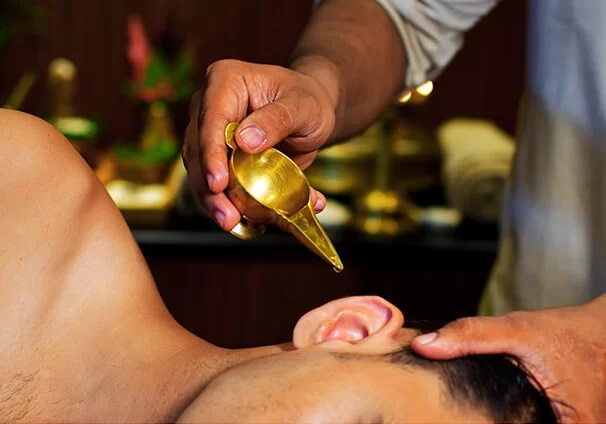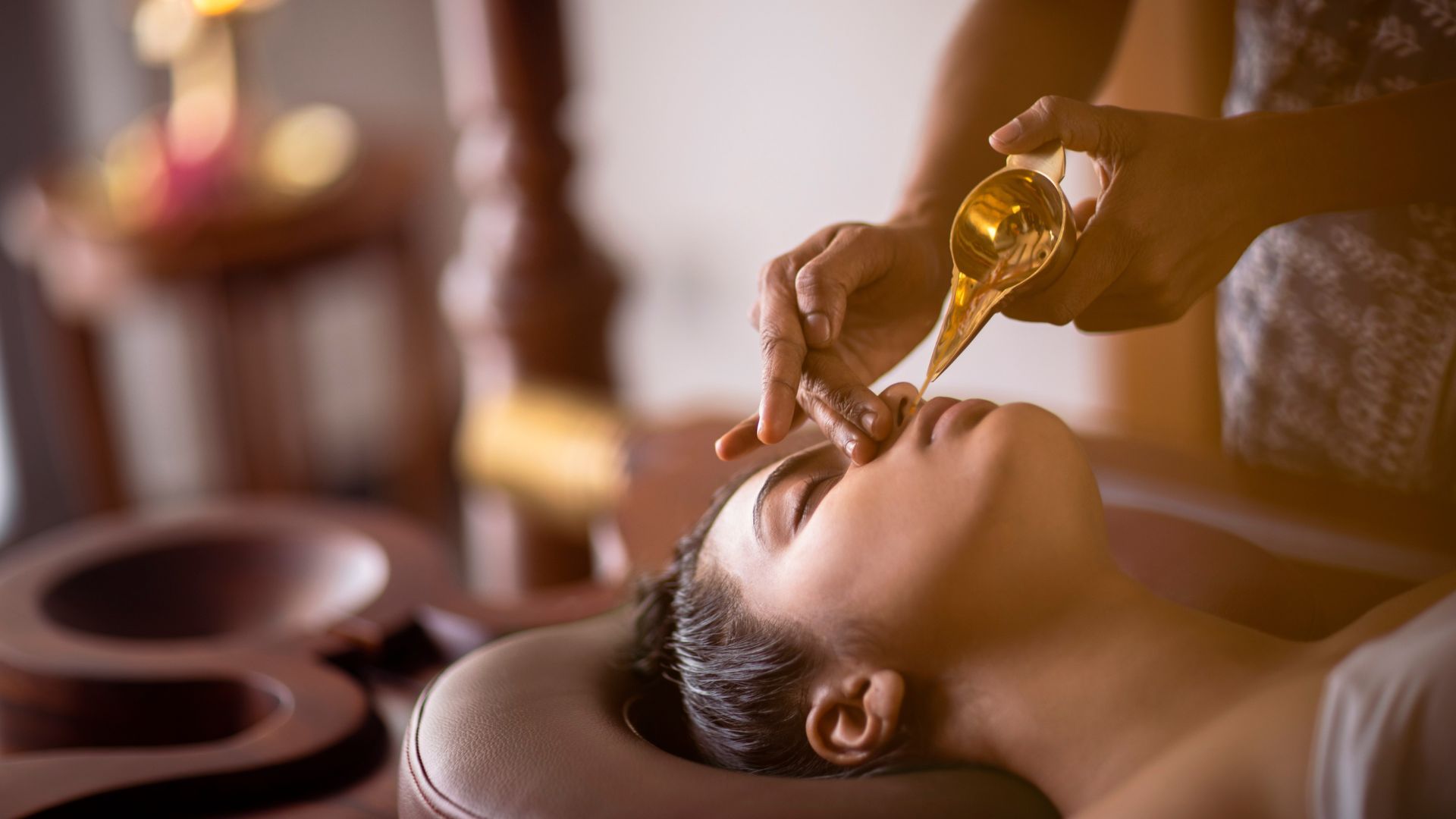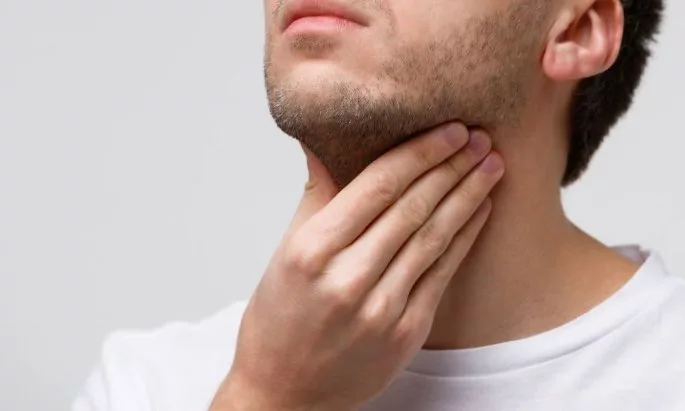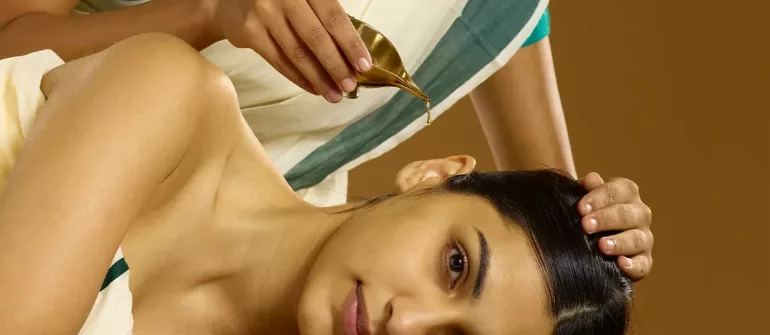Introduction to the Curative Aspect
Having explored the preventive measures for maintaining the health of the ear, nose, and throat (ENT) in Ayurveda, it is equally important to delve into the curative strategies designed to address disorders once they arise. Ayurveda adopts a holistic approach to treatment, focusing not only on alleviating symptoms but also on addressing the root cause of diseases. The curative aspect integrates detoxification (Shodhana), pacification (Shamana), and rejuvenation (Rasayana) to restore balance among the doshas (Vata, Pitta, Kapha) and ensure the proper functioning of the Indriyas (sense organs).
For ENT disorders, therapies such as Nasya (nasal therapy), Karnapoorana (ear oiling), and Dhoomapana (herbal smoke inhalation) play a pivotal role. These treatments, combined with internal medications and lifestyle modifications, aim to cleanse, nourish, and rejuvenate the affected organs. The Ayurvedic approach ensures not only symptomatic relief but also long-term resilience of the sensory organs. In this section, we will explore the comprehensive curative strategies for ENT disorders as envisioned in Ayurveda.
Ayurveda’s Insight into Shirorogas (Head Disorders)
Ayurveda provides a detailed understanding of disorders affecting the sense organs, particularly those related to the head (Shirah), which it considers one of the three principal vital organs where Prana (life force) resides. Ancient texts describe 76 types of eye diseases, 28 ear disorders, 31 nasal conditions, 11 types of head disorders, and 67 ailments affecting the mouth and throat. Among these, Shirorogas (head disorders) hold a special place due to their significant impact on sensory and overall health.
The head, referred to as Shirah, is seen as the control center of sensory and motor functions, akin to the rays of the sun emanating energy throughout the body. One of the most common complaints under Shirorogas is Shirahshoola (headache), which Ayurveda regards as a unique condition. Acharyas like Sushruta and Sharangadhara identify 11 types of headaches, while Vagbhata elaborates on 19 types. These include Vataja, Pittaja, Kaphaja, Sannipataja, Raktaja, Krimija, Kshayaja, Suryavarta, Anantavata, Ardhavabhedaka, and Shankhaka. Of these, Ardhavabhedaka (similar to migraines) is among the most prevalent.
Headaches can stem from dosha imbalances, stress, lifestyle issues, or underlying conditions, requiring careful diagnosis and tailored treatments. Ayurvedic remedies emphasize holistic management, combining therapies like Snehapana, Kayavirechana, Shirovirechana, and lifestyle modifications.
Ayurvedic Therapies for Shirorogas

1. Shiro Abhyanga (Head Massage)
Shiro Abhyanga involves the gentle application of medicated oils to the scalp. It is both a preventive and curative therapy, balancing Vata dosha and nourishing sensory organs. The oils, such as Triphaladi Taila, Manjishtadi Taila, Ksheerabala Taila, and Dashamooladi Taila, improve blood circulation, relax tense muscles, and stimulate hair growth. Regular head massages release endorphins, reduce pain, and alleviate stress, making it effective for headaches, anxiety, and depression.
2. Shiro Pichu
This therapy involves placing a gauze piece or cloth soaked in medicated oil or ghee over the forehead, specifically on the anterior fontanelle. Shiro Pichu is highly effective for managing headaches, nervous disorders, and even hair-related issues like graying and hair fall. Its calming effect induces sleep and provides relief from chronic stress.
3. Shiro Lepa (Head Paste Application)
Medicated pastes are applied to the scalp based on the patient’s condition. Ingredients such as Yashti (licorice), Aamalaki (Indian gooseberry), Triphala, Lodra, Manjishtha, Kachora, and Musta are commonly used. For stress-related headaches, pastes made with Jyotishmati (Celastrus paniculatus), Brahmi, and Triphala are particularly beneficial. These applications not only soothe the head but also strengthen sensory functions.
Common issues like sinusitis, ear infections, or throat problems can have a significant impact on your daily life. Dr. Sri Ranjani Bhat, with her expertise in ENT therapies, provides tailored treatment plans to help manage and alleviate these conditions.
Herbal Formulations and Medicines
Ayursh Ayurveda employs a variety of herbal formulations to manage Shirorogas effectively. Systemic medications include:
- Pathyadi Kwath and Dashmoola Kwath: Used for detoxification and balancing doshas.
- Varunadi Kwath and Dashmoola Ghrita: Ideal for calming aggravated Vata.
- Ashwagandhadi Ghrita: Strengthens the nervous system.
- Pathyadi Guggulu and Mahayogaraj Guggulu: Effective for chronic conditions.
- Laghusutashekhara Rasa, Shirahshuladivajra Rasa, Godanti Bhasma, Shankh Bhasma, and Pravala Bhasma: Alleviate pain and address underlying dosha imbalances.
Nasal Disorders: An Ayurvedic Perspective
The nose, a vital sensory organ, often faces the brunt of environmental pollutants as it filters, warms, and moistens the air before sending it to the lungs. In Ayursh Ayurveda, nasal disorders are extensively detailed in the context of Nasa Roga Adhikara. These conditions are described in terms of their symptoms, pathogenesis, and treatments. Among these, Pratishyaya (common cold) holds a special place, as ancient texts highlight its complications and emphasize its role as a prodromal sign of more serious ailments.
Also, Read – Ayurvedic Treatment for Diabetes | Ayurveda for Diabetes
Common Nasal Disorders and Symptoms
Nasal disorders can manifest in various forms, such as discharge, blockages, or inflammation. Some key symptoms include:
- Nasal Discharge: Ranges from thin (Tanusrava) to thick and colored (Peetasrava, Shuklaghanasrava), and in severe cases, bloody (Raktasrava) or purulent (Pooyasrava).
- Nasal Blockage: Seen in conditions like Nasanaha, Apeenasa, and Nasashosha.
- Inflammation: Includes conditions like Nasapaka, Vestibulitis, and Furunculosis.
- Complications of Pratishyaya: May lead to hearing loss (Badhirya), blindness (Andhatva), headache (Shiroroga), or loss of smell (Aghratwa).
Sinusitis, one of the more common conditions, is caused by infections or allergic reactions leading to inflammation of the para-nasal sinuses. Symptoms include green or yellow nasal discharge, headache, heaviness in the head, facial pain, fever, and bad breath. Structural abnormalities like deviated nasal septum, turbinate hypertrophy, and nasal polyps can also contribute to nasal disorders.
Ayurvedic Treatments for Nasal Disorders
Ayurveda emphasizes a holistic approach, combining internal medications, therapies, and lifestyle adjustments to treat nasal disorders. Treatments are tailored based on the dosha involved and the stage of the disease:
Acute Stage (Amaavastha)
- Therapies: Steam inhalation, Dhoomapana (inhalation of medicated smoke), and digestion-enhancing herbs like Shunti (ginger), Maricha (black pepper), and Dashamoola Kada are prescribed to alleviate congestion and detoxify the body.
- Medicines: Formulations like Panchakola Phanta and Gojivhadi Kada help in clearing respiratory blockages.
Chronic Stage (Pakvaavastha)
- Shodhana (Purification): Therapies like Nasya (nasal therapy) and Grithapana (ghee therapy) are recommended to remove accumulated doshas.
- Rasayana (Rejuvenation): Medicines like Vyoshadivati, Agastya Haritaki, and Haridra Khanda are used to build immunity and reduce inflammation.
Download our app for ayurvedic treatment and therapies.
Ayurvedic Therapies for Nasal Disorders
1. Nasya Karma (Nasal Therapy)
Ayurveda regards the nose as the gateway to the head (Nasa Hi Shiraso Dwaram). Nasya involves administering medicated oils, powders, or liquids through the nostrils.
Types of Nasya:
- Taila Nasya: Protects the nasal mucosa in Vataja disorders.
- Shodhana Nasya: Removes vitiated doshas from the head region.
- Benefits: Nasya helps in treating Pratishyaya (cold), headaches, nasal congestion, and conditions like Kaphaja Nasaroga. Oils like Shadbindu Taila, Pathadi Taila, and Anu Taila are commonly used.
2. Nasa Pichu (Medicated Wick Therapy)
A medicated wick soaked in oils or decoctions is inserted into the nostrils. This therapy is effective for structural issues like turbinate hypertrophy, nasal polyps, and deviated septum.
Dhoomapana (Inhalation of Medicated Smoke)
Dhoomapana involves inhaling medicated fumes through the nose or mouth and exhaling through the mouth. This therapy is particularly effective in clearing Kapha from the respiratory tract and preventing nasal congestion.
Common Herbs Used: Guggulu, Vacha, Shigrubija, and Kushta.
Nasapana or Jalaneti (Nasal Irrigation)
Jalaneti, a yogic practice, involves rinsing the nasal passages with lukewarm saline water. This regular practice maintains nasal hygiene, prevents blockages, and reduces the risk of infections.
Specific Nasal Conditions and Management
1. Pratishyaya (Common Cold)
Ancient texts provide a detailed description of Pratishyaya and its treatment. The following are commonly used:
- Nasya for clearing nasal passages.
- Internal medicines like Vyaghree Haritaki and Sitopaladi Churna.
- Steam inhalation and herbal decoctions.
2. Sinusitis
Sinus inflammation is addressed with:
- Shodhana: Steam inhalation and therapies like Shiro Virechana.
- Medicines: Mahalakshmivilasa Rasa, Tribhuvanakirti Rasa, and Vyoshadi Vati.
- Immunity boosters like Thaleesapatradilehya and Mridweekadilehya.
3. Epistaxis (Nasal Bleeding)
Nasal bleeding can result from trauma, infections, or systemic conditions.
- First Aid: Pinching the nose, applying ice packs, and using medicated nasal drops like Spatika Drops or Doorvaswa Rasa.
- Therapies: Nasya with medicated ghee like Doorvadi Ghrita or Yashti Taila.
4. Snoring
Snoring, often caused by airway obstructions, is managed by addressing the underlying causes such as nasal blockages or soft palate abnormalities. Lifestyle modifications and herbal remedies can alleviate symptoms.
Karna Rogas: Ayurvedic Management of Ear Disorders

In Ayurveda, ear disorders (Karna Rogas) are categorized based on the anatomy of the ear, including the external, middle, and inner ear. Common conditions include Karna Shoola (otalgia), Badhirya (hearing loss), Karna Nada (tinnitus), and Karna Srava (ear discharge). These ailments arise from a range of factors, including infections, environmental influences, and doshic imbalances, and are addressed through holistic Ayurvedic therapies.
Disorders of the External Ear
Karna Shoola (Otalgia)
Karna Shoola, or ear pain, is often caused by external ear pathology or referred pain from nearby structures like the tongue, teeth, or temporomandibular joint (TMJ).
Treatment:
- Karnapoorana: Instilling medicated oils such as Nirgundi Taila, Dashamoola Taila, and Lashuna Taila.
- Nadisweda and Bilwadipindasweda: Localized steam applications.
- Guggulu Dhoopana: Herbal smoke inhalation for cleansing and pain relief.
- Internal medications like Triphala Guggulu and Induvati help alleviate pain.
Suggested – Virechana Treatment: Procedure, Types, Benefits, and Precautions
Karna Gutha (Impacted Cerumen)
Hardened earwax (cerumen) can cause discomfort and mild hearing loss if not addressed.
Treatment:
- Cerumenolysis: Softening wax using Aparmarga Kshara drops, Kshara Taila, or sodium bicarbonate drops for 3–5 days before careful removal.
- Ayurveda advises against using cotton-tipped buds, as they may push the wax further into the canal.
Disorders of the Middle Ear
Karna Srava (Otorrhoea)
This condition involves ear discharge, often resulting from acute or chronic otitis media (ASOM/CSOM). Children are particularly susceptible due to their shorter Eustachian tubes and lower immunity.
Treatment:
- Internal Medications: Thribhuvankeerthi Rasa, Sudarshana Vati, Shwasananda Gulika, and Kaishora Guggulu reduce rhinitis and middle ear inflammation.
- These remedies also address nasal mucosa congestion, which commonly accompanies middle ear infections.
Disorders of the Inner Ear
Badhirya (Hearing Loss)
Hearing loss in Ayurveda, termed Badhirya, may stem from noise trauma, ototoxic substances, or aging. It is categorized based on doshic involvement:
- Kaphaja Badhirya: Conductive hearing loss.
- Vataja Badhirya: Sensorineural hearing loss.
- Vata-Kaphaja Badhirya: Mixed hearing loss.
Treatment:
- Nasya Karma: Administering medicated oils like KB 101, Dhanvantari Taila, and Ksheerabala Taila directly impacts auditory functions.
- Rasayana Therapy: Rejuvenating formulations like Dashamoolaharitaki Lehya and Ashwagandha Avaleha nourish auditory nerves and improve hearing.
Karna Nada (Tinnitus)
Tinnitus is characterized by a perception of ringing, hissing, or buzzing in the ears. It often results from nerve damage, noise exposure, or certain medications.
Treatment:
- Karnapoorana: Oils like Dashamoola Taila, Dhanvantari Taila, and Ashwagandha Balalakshadi Taila are effective.
- Internal medications like Kseerabala Capsules and Dashamoolarishta strengthen auditory nerves.
- Therapies such as Shiro Basti (herbal oil retention on the scalp) and Nasya provide additional relief.
Ayurvedic Therapies for Karna Rogas
1. Karna Dhoopanam (Herbal Smoke Therapy)
This involves applying medicated fumes to the ear, especially after dry mopping in conditions like otomycosis and otorrhoea.
- Herbs Used: Guggulu, Jatamamsi, Agaru, Haridra, and Karpoora.
2. Karnapooranam (Oil Instillation)
A key therapy for ear pain (Karna Shoola), tinnitus (Karna Nada), and hearing loss (Badhirya), Karnapoorana involves instilling warm medicated oils into the ear canal.
3. Karna Avachoornanam (Powder Application)
Fine herbal powders are dusted into the ear canal for conditions like external otitis (Poothikarnam) and ear discharge.
4. Karna Pichu (Wick Therapy)
A medicated wick soaked in oils is placed in the ear for conditions like tympanic membrane perforation, where Karnapoorana may not be feasible. Oils like Jathyadi Taila and Triphala Taila are commonly used.
Mukha Rogas: Ayurvedic Perspective on Oral Health and Disorders
The oral cavity often mirrors the condition of other areas of the body, with many systemic illnesses manifesting in the soft tissues of the oral mucosa. When oral health is compromised, it can significantly affect overall health. Ayurveda emphasizes the importance of oral hygiene through traditional practices and the use of natural ingredients. Twigs of babbula, neem, and khadira are commonly used for tooth cleaning, followed by jivhanirlekhana. Additionally, dantadhavana (tooth brushing) with tiktakashaya rasa dravyas (bitter astringent medicines) not only prevents the accumulation of oral secretions but also helps avoid pathogenesis. Ayurvedic practices like gandoosha (oil pulling) and kavala (mouth gargles) are routinely recommended to strengthen the mouth and prevent diseases of the oral cavity and throat. The use of tambulasevana (chewing of betel leaves) with ruchya, mukha shodhaka, deepaka, pachaka (appetizer, mouth-cleansing, digestive agents) promotes mouth detoxification, enhances taste, and aids digestion.
Common Mukha Rogas (Oral Disorders)
The disorders affecting the oral cavity are broadly classified as saptaangas (seven components) of the oral cavity, with common conditions including sore throat (pharyngitis), tonsillitis (tundikeri), and adenoids (gala shundika).
Pharyngitis (Sore Throat)
Pharyngitis is a common condition characterized by inflammation of the pharynx, often caused by viral infections like herpes, measles, or rhinitis, leading to mouth ulcers and sore throat. Bacterial pharyngitis is more severe, with symptoms including swollen glands, a congested throat, high fever, muscle, and joint pain. In Ayurveda, simple pharyngitis can be treated with medicated gargles like tribhuvanakeerthi, vasakadyasava, gojivhaydi kwatha, and dashamularishta to soothe the throat and clear phlegm. Herbal powders such as yashti, trikatu, thaleesapatradi churna, and sitopaladi churna mixed with honey can also be beneficial.
Tundikeri (Tonsillitis)

Tonsillitis, an inflammation of the tonsils, is commonly associated with sore throat and fever. It is usually caused by bacterial infections and may result in pain while swallowing. Acute cases can be managed with medications like swasanandam, shwasakutara, kaphakutara rasa, swasahara mishrana, shwasakasachintaman, and haritaki kwatha. Chewing tablets of khadiradi vati and lavangadi vati can help relieve symptoms. In chronic cases with hypertrophied tonsils, apamarga kshara is effective in reducing the size, particularly in parenchymatous tonsillitis. For fibrotic tonsillitis, treatments like tankana jalagandusha, apamarga ksharapratisarana, triphala guggulu, nimbadi guggulu, and gandhana rasayana can help rupture pus pockets and eliminate infected material. Rasayanas (rejuvenating treatments) like agasthya rasayana, mridweekadilehya, kasthurayadi rasayan, and vyaghree rasayana are beneficial in enhancing immunity and preventing recurrent infections.
Arbuda (Throat Cancer)
Throat cancer may begin with minor symptoms like hoarseness of the voice, which can become chronic. Persistent sore throat, a lump in the neck, especially in older adults, should be carefully monitored. Risk factors for throat cancer include tobacco use, alcohol consumption, vitamin deficiencies, and exposure to irritants like fumes from petrol, paints, and industrial chemicals. Conditions such as leukoplakia (white patches in the mouth) can also increase the risk of throat cancer. Additionally, chronic acid reflux (GERD) may damage the throat lining, making it more susceptible to cancer. Early detection and treatment are crucial in managing this condition.
Disorders of the Vocal Cords
The vocal cords are essential for producing sound by modulating air from the lungs. Disorders of the vocal cords are often caused by misuse or overuse of the voice, such as continuous singing, talking, smoking, coughing, or exposure to irritants. Common vocal cord disorders include laryngitis, vocal nodules, polyps, and vocal cord paralysis. These conditions can lead to hoarseness, pain, or difficulty in speaking. Ayurvedic treatments for vocal cord disorders focus on maintaining vocal cord health and soothing inflammation through herbs and practices like gandoosha and kavala.
Ayurvedic Treatments for Oral Health
Gandusha and Kavala are essential practices in Ayurveda for maintaining oral health. Tilataila gandusha (oil pulling with sesame oil) helps in preventing dantagata rogas (dental diseases) by strengthening the teeth and preventing decay. Triphala gandusha is particularly beneficial due to its anti-inflammatory properties, which prevent many dental and oral diseases. Gargling with salt water, tankana bhasma (borax), and medicated decoctions such as yashti, haritaki, and triphala kwatha or khadira arishta can further enhance oral health.
Pratisarana (local application of medicated substances) is another Ayurvedic technique used to remove debris from lesions, improve blood circulation, and promote healing. The same formulations used for gandusha can be applied locally with honey or oil to support tissue repair and recovery.
Conclusion
The sense organs—sight, hearing, touch, taste, and smell—are crucial to our interaction with the world around us. They help us perceive our environment, allowing us to respond appropriately to various stimuli and ensuring our survival and well-being. Each sense organ plays a unique role in gathering information that the brain processes to guide our actions, thoughts, and emotions. Proper care, balanced nutrition, and mindfulness in daily practices contribute to the optimal functioning of the sense organs, promoting overall health and enhancing our quality of life.
Reference Link – Stroke: What It Is, Causes, Symptoms, Treatment & Types



